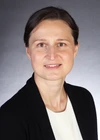OPTIMA – Omics Approach for Personalized Prevention of Type 2 Diabetes Mellitus for African and European Populations
- Keywords
-
Diabetes mellitus, OMICS, dietary patterns, migration, ethnicity, adults
- Countries
-
South Africa, Ghana, The Netherlands, Sweden
- Summary
-
The OPTIMA project constitutes a primary prevention project with a personalized approach to combat the growing global prevalence of type 2 diabetes (T2D) and impaired glucose tolerance (IGT), collectively termed dysglycaemia. Specifically, this project addresses the differences in the pathophysiology of T2D by ethnicity and sex, which so far, has not resulted in respective guidelines for the prevention of T2D. Therefore, the overarching goal of the OPTIMA project is to develop ethnic- and sex-specific clinically feasible and cost-effective algorithms for the early prediction of dysglycaemia to inform culturally acceptable preventative dietary modifications in European and SSA populations. In the OPTIMA project, Danquah and her team lead the work on the statistical analysis of proteomics data and the identification of dietary patterns related to candidate biomarkers.
- Methodology
-
We work with prospective cohort data from two African cohorts (South African and Ghanaian) and one European cohort (Swedish adults). The study uniquely combines proteomics and metabolomics to identify known and novel ethnic- and sex-specific biomarkers that will not only provide pathophysiological insights into dysglycaemia in different populations, but also improve early prediction of dysglycaemia in European and African populations. We will also identify objective biomarkers reflecting differences in diet that relate to risk of dysglycaemia across European and African populations, which will be used to inform targeted dietary modifications for primary prevention of T2D in the different populations. The cost-effectiveness of the targeted dietary modifications, as well as the perceptions among target populations regarding these early preventative strategies will be assessed in the respective countries (South Africa, Ghana, Germany, Sweden) to inform future implementation of personalised prevention strategies.
- Main Cooperation Partners
-
- Prof. Julia Goedecke, South African Medical Research Council (SAMRC), South Africa
- Prof. Tommy Olsson, Umeå University (UMU), Umeå, Sweden
- Prof. Rikard Landberg, Chalmers University of Science and Technology (Chalmers), Gothenburg, Sweden
- Prof. Charles Agyemang, University Medical Center Amsterdam, University of Amsterdam (AMC), Amsterdam, The Netherlands
- Main Funding Partners
-
German Federal Ministry for Education and Research (BMBF)
ERAPerMed – Prevention in Personalized Medicine
- Publications
-
- Katte JC, Sibomana L, Hapunda G, Cikomola JC, Abidha CA.Diabetes in sub-Saharan Africa: what are the next steps? Lancet Diabetes Endocrinol. 2022 Nov;10(11):766-768. doi: 10.1016/S2213-8587(22)00274-1.
- Bonsu Osei T, Mank I, Sorgho R, Nayna Schwerdtle P, Hövener C, Fischer F, Razum O, Danquah I. Aetiological research on the health of migrants living in Germany: a systematic literature review. BMJ Open. 2022 May 30;12:e058712.
- Osei TB, van Dijk AM, Dingerink S, Chilunga FP, Beune E, Meeks KAC, Bahendeka S, Schulze MB, Agyemang C, Nicolaou M, Holleboom AG, Danquah I. Reduced Rank Regression-Derived Dietary Patterns Related to the Fatty Liver Index and Associations with Type 2 Diabetes Mellitus among Ghanaian Populations under Transition: The RODAM Study. Nutrients. 2021 Oct 20;13(11):3679
- Duration of the Project
-
3 years (01 Jan 2023 – 31 Dec 2025)
- Team
-
- Prof. Dr. Ina Danquah
- Carol Akinyi Abidha (candidate PhD)
- Dr. Maike Albers
- Tracy Bonsu Osei (candidate PhD)


